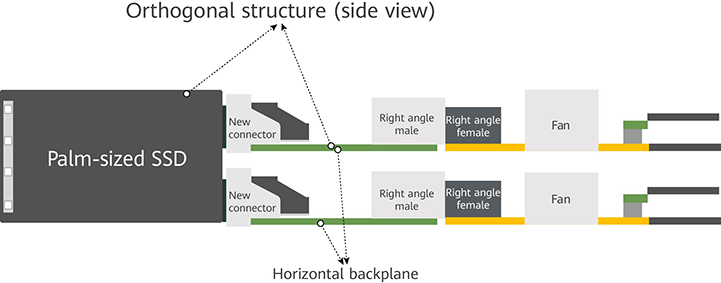This site uses cookies. By continuing to browse the site you are agreeing to our use of cookies. Read our privacy policy>![]()
This site uses cookies. By continuing to browse the site you are agreeing to our use of cookies. Read our privacy policy>![]()
Enterprise products, solutions & services
As information becomes fully digitalized, the digital economy will become the new engine to harness economic growth for both countries and enterprises. Embracing digital transformation is the catalyst for seizing opportunities in the digital economy. In particular, digital applications are expected to break through previous boundaries over next five to ten years. With the boom of Internet traffic, data volumes to be stored will increase from 32 ZB in 2018 to 180 ZB in 2025, of which 80% is unstructured data. For a common carrier, the upgrade from 4G to 5G is likely to increase data volumes by 7.5 times, whereas a self-driving car will generate 64 TB training data every day.

With the explosion in data volumes and applications, large data centers are getting larger, and the number of small and edge data centers is growing. However, data centers are a major consumer of power. Currently, the total global power consumed by data centers accounts for around 2% to 3% of the total power consumed every year. What's more, by 2025 this will likely reach 42% of the total power consumed in the ICT field. Needless to say, this is both a big concern not only in terms of high expenditure, but also in the resulting carbon emissions. To put this in context, the global carbon emissions of data centers are equivalent to those of the aviation industry. In the 2019 United Nations Environment Programme (UNEP) Emissions Gap Report, global carbon emissions must be cut by 7.6% every year for next decade to get on track towards the 1.5°C temperature goal, as set by the Paris Agreement. This is echoed by the European Union (EU), who set out their agenda to achieve zero carbon emission by 2050. There is a long way to go to slash energy wastage and reduce emissions, and that’s why Huawei set out to reinvent data centers.

All-Flash Data Center – Flash Media

All-Flash Data Center – High-Density Disk Enclosure
Huawei All-Flash Data Center supports the industry's highest density design thanks to the leading heat dissipation technology. Huawei introduces two horizontal backplanes with orthogonal architecture, where disk connectors and controller connectors are connected orthogonally, preventing mutual interference and improving the disk connector density by 44%. In addition, the thickness of Huawei-developed palm-sized NVMe SSDs is reduced from 14.8 mm to 9.5 mm, allowing a 2 U enclosure to accommodate up to 36 SSDs. Moreover, the horizontal backplanes increase the window area by 50% and the heat dissipation capability by 25%, ensuring effective heat dissipation from the SSDs.


All-Flash Data Center – Efficient Power Supply
Huawei All-Flash Data Center uses 80 Plus Platinum and Titanium power modules, which provide up to 94% power conversion efficiency and 98% power factor when the load is 50%, reducing power loss. The Titanium power module can even reach 96% conversion efficiency when the load is 50% and over 90% conversion efficiency when the load is light, effectively minimizing power loss. The power modules have passed the 80 Plus certification.
80 Plus efficiency requirements

All-Flash Data Center – HVDC Power Supply
Huawei All-Flash Data Center supports high-voltage direct current (HVDC) or AC/DC hybrid power input to replace AC-only, offering better power supply reliability for your system. This also reduces the UPS footprint, as well as the equipment room construction and subsequent maintenance costs. The HVDC power supply cuts down the intermediate processes of power conversion, improving the power efficiency by 15% to 25%. This saves around a million dollar of electricity fees for large data centers every year. In comparison, when low-voltage DC (12 V/48 V) is supplied to high-power devices, thick cables must be used to increase the current, which can cause unnecessary headaches during construction and layout. But with HVDC, you can say goodbye to the stress involved in conventional data centers, and upgrade just once for a brighter, digital future.
All-Flash Data Center – PID Speed Control and Adjustment
Huawei All-Flash Data Center uses the proportional-integral-derivative (PID) algorithm to adjust the fan speed, which solves the problems such as slow response of fan speed adjustment, high fan power consumption, great fan speed fluctuation, and loud noise. The PID algorithm facilitates quick, quiet, and green fan systems throughout your data environment.
• After verification, the algorithm increases energy efficiency by 4% to 9% and greatly prevents fan speed fluctuation.
• It also accelerates the fan response by 22% to 53%, while significantly lowering the noise.